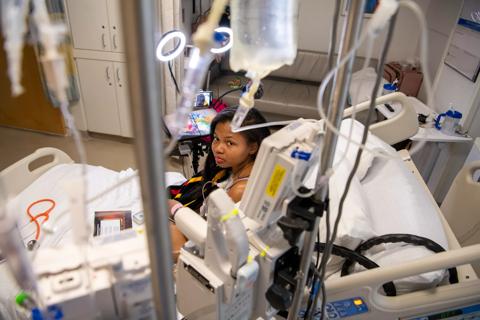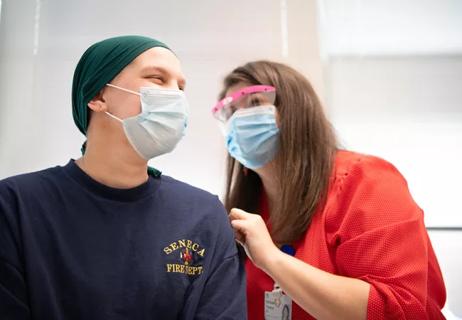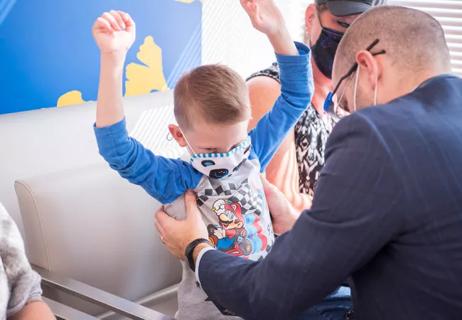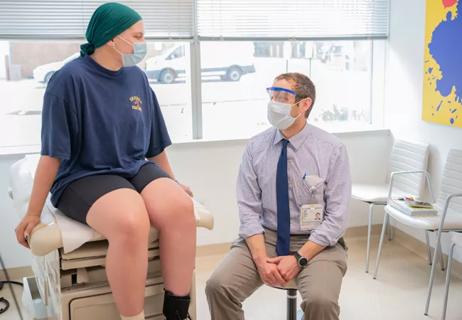Findings suggest that a uniform dose can be an effective preventive strategy

Tumor lysis syndrome (TLS) is an oncologic emergency that commonly occurs in patients being treated with cytotoxic chemotherapy. Rapid lysis of tumor cells and subsequent release of intracellular components triggers an increase in uric acid and precipitation of uric acid in the renal tubules. Given the potential for renal insufficiency and even renal failure, prevention and treatment of TLS are critical.
Cleveland Clinic is a non-profit academic medical center. Advertising on our site helps support our mission. We do not endorse non-Cleveland Clinic products or services. Policy
The traditional approach to preventing TLS is ensuring adequate hydration and with allopurinol. A small retrospective study by Cleveland Clinic researchers, however, shows that in children, adolescents and young adults, a single weight-based dose of rasburicase is effective for prevention.
Presented at ASPHO 2021, data from the analysis showed that a weight-based dose of 0.2 mg/kg/dose (maximum dose of 4.5 mg) of the recombinant urate-oxidase enzyme normalized uric acid within 24 hours in all patients. At no point after administration did uric acid levels exceed the upper limit of normal.
“What makes rasburicase different is that it converts uric acid to allantoin, which is a soluble metabolite, whereas allopurinol prevents accumulation of uric acid,” says Anthony Zembillas, PharmD, an oncology pharmacist at Cleveland Clinic Children’s and first author of the study. “Our research and clinical experience indicate that one dose can be used preemptively or therapeutically to quickly reduce uric acid levels.”
For several years, rasburicase has been the standard of care at Cleveland Clinic Children’s for patients with elevated uric acid levels and/or additional risk factors for TLS. The study was a chart review, using the hospital’s electronic medical record, EPIC, of all those who received it from 2014 through 2019.
Ten patients age 4 months to 20 years (median 12 years) were identified, most of whom had acute lymphoblastic leukemia. Other diagnoses included T-cell lymphoblastic lymphoma and Burkitt lymphoma. Prior to rasburicase administration, median baseline uric acid was 10 mg/dL (range 5.1-15.7 mg/dL) and median baseline white blood cell count was 60,690.
All of the patients received hydration and nine received concomitant allopurinol. All received only a single dose of rasburicase within one to two days of beginning treatment for a malignancy. The median rasburicase dose was 4.5 mg (range 1.5-4.5 mg). The median weight-based dose was 0.12 mg/kg/dose (range 0.04-0.3 mg/kg/dose).
Following rasburicase administration, uric acid levels were reduced by a median of 60% within 10 hours. The median uric acid level at 24 hours was 0.35 mg/dL. The median duration of allopurinol therapy was seven days.
Rasburicase was first approved for use in children in 2002 and the current pediatric indication is administration of 0.2 mg/kg as an intravenous infusion over 30 minutes daily for up to five days. Pharmacokinetic studies and clinical data have shown that a single dose can be just as effective.
Says Dr. Zembillas, “We give any pediatric cancer patient who has a high uric acid level or a high perceived risk of TLS or development of complications from it a single, weight-based dose of rasburicase, capped at a maximum of 4.5 mg. The retrospective analysis validated that clinical practice.”
Rasburicase has very few side effects and is well tolerated. The exception is patients with glucose-6-phosphate dehydrogenase (G6PD) deficiency, who may experience hemolysis and potentially methemoglobinemia. Data on G6PD status were available for only 5 of the 10 patients in the Cleveland Clinic Children’s study. None of them had the deficiency, and as a result, the investigators did not evaluate adverse effects in the study population.
“I think the real-world implication of our research is that a single, uniform dose of rasburicase can be effective for a range of patients with different tumor burdens,” says Ilia Buhtoiarov, MD, a pediatric hematologist/oncologist and Head of the PediatricLeukemia and Lymphoma Group at Cleveland Clinic Children’s. “It’s a very practical, straightforward, and economical approach to a potentially serious problem in cancer patients.”

New guidelines expand on psychosocial, sexual health, cognitive and other issues

Consensus conference begins work on new recommendations for clinical care and research

Genetic changes are similar between some vascular anomalies and cancers

How to combat the rise in mortality when patients become adults

First in-human trial using CRISPR/CASP 12 for gene editing in sickle cell disease

A closer look at training, scholarship and opportunity within this sub subspecialty

Can disulfiram boost the efficacy of chemotherapy in this patient population?

Highlighting the importance of a multidisciplinary approach to care